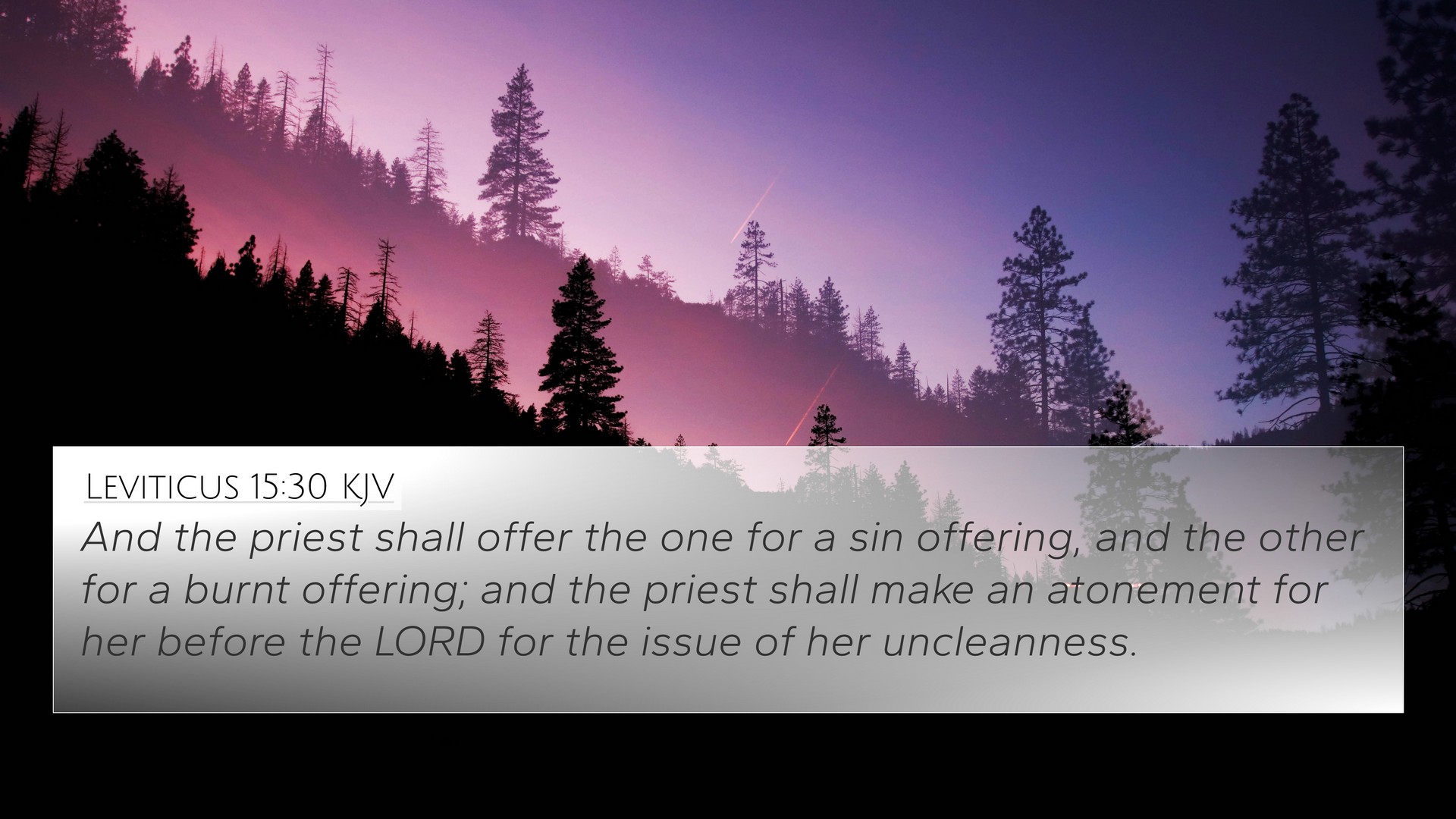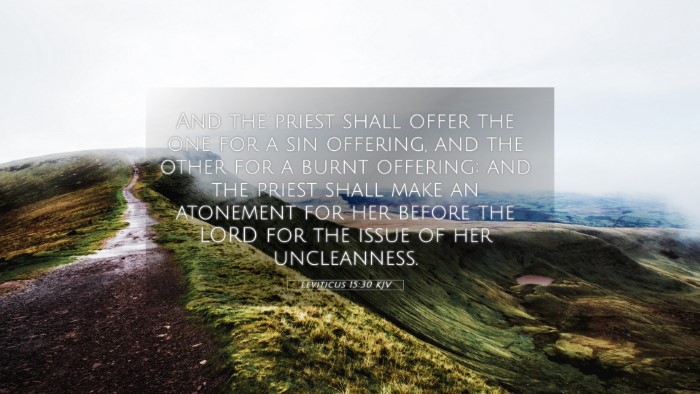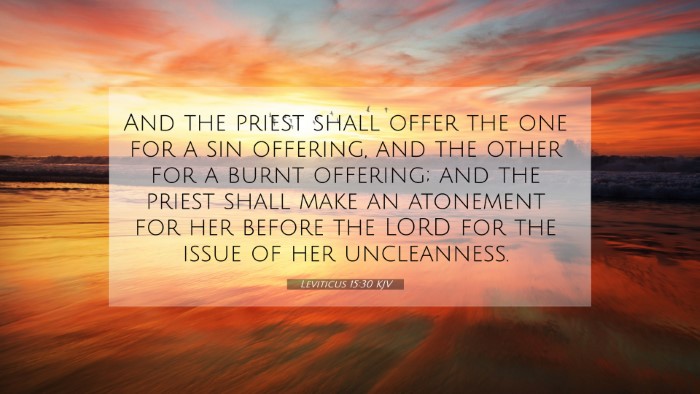Understanding Leviticus 15:30
Leviticus 15:30 states: "And the priest shall offer the one for a sin offering, and the other for a burnt offering; and the priest shall make an atonement for her before the Lord for the issue of her uncleanness." This verse provides insight into the ritual practices surrounding the concept of purity in Israelite society.
Summary of Meaning
This verse outlines the procedure that a priest must follow in dealing with a woman who has experienced a discharge, which is regarded as a state of uncleanliness. The offerings mentioned – a sin offering and a burnt offering – illustrate the divine mandates for purification and atonement.
Thematic Connections
In examining Leviticus 15:30, various themes arise regarding the significance of cleanliness, ritual purity, and atonement.
- Cleansing: The process of becoming ceremonially clean is a recurring theme in Levitical law.
- Atonement: This highlights the relationship between sin, guilt, and purifying rituals.
- Divine Instruction: The detailed instructions reflect God's concern for His people's holiness.
Connections Between Bible Verses
There are several important Bible verses that relate to Leviticus 15:30, highlighting various aspects of atonement and purity:
- Leviticus 4:35: The priest's role in atonement through sacrifices.
- Hebrews 9:22: Emphasizes that without the shedding of blood there is no forgiveness.
- Numbers 19:12: Pertains to purification from the dead and the importance of being clean before God.
- Matthew 5:8: Blessed are the pure in heart, resonating with the themes of purity in this verse.
- 1 John 1:7: The blood of Jesus cleanses us from all sin, paralleling the concept of atonement.
- Romans 5:1: Peace with God through our Lord Jesus Christ, linking the idea of reconciliation.
- James 4:8: Encouragement to cleanse hands and purify hearts to approach God.
Comparative Bible Verse Analysis
In performing a comparative analysis of Leviticus 15:30 with other scriptures, one can see a strong thread of divine instructions concerning life's complexities, particularly around the themes of uncleanness and restoration. The purifying sacrifices reflect God's holistic approach to human sinfulness.
Inter-Biblical Dialogue
Leviticus 15:30 serves as a significant component in the inter-Biblical dialogue where the laws of the Old Testament inform the spiritual practices in the New Testament. A broad understanding can be drawn from the connections between Old Testament rituals and New Testament teachings on spiritual purity.
Conclusion
Leviticus 15:30 encapsulates essential theological and practical truths regarding sin, purification, and the need for divine grace. Its implications resonate through scripture, making it a vital part of both Old Testament law and New Testament grace.
Tools for Bible Cross-Referencing
For those seeking to delve deeper into scripture and its interconnectedness, several tools are recommended:
- Bible Concordance: A valuable resource for locating verses based on key terms.
- Bible Cross-Reference Guide: Useful for tracing thematic verses.
- Cross-Reference Bible Study Methods: Helps in developing a deeper understanding of scripture relationships.
Final Thoughts
The practice of cross-referencing biblical texts enriches our understanding of the sacred writings. By investigating the connections between Leviticus 15:30 and related verses, believers can gain invaluable insights into themes of atonement, purity, and the overarching narrative of redemption found throughout the Bible.


